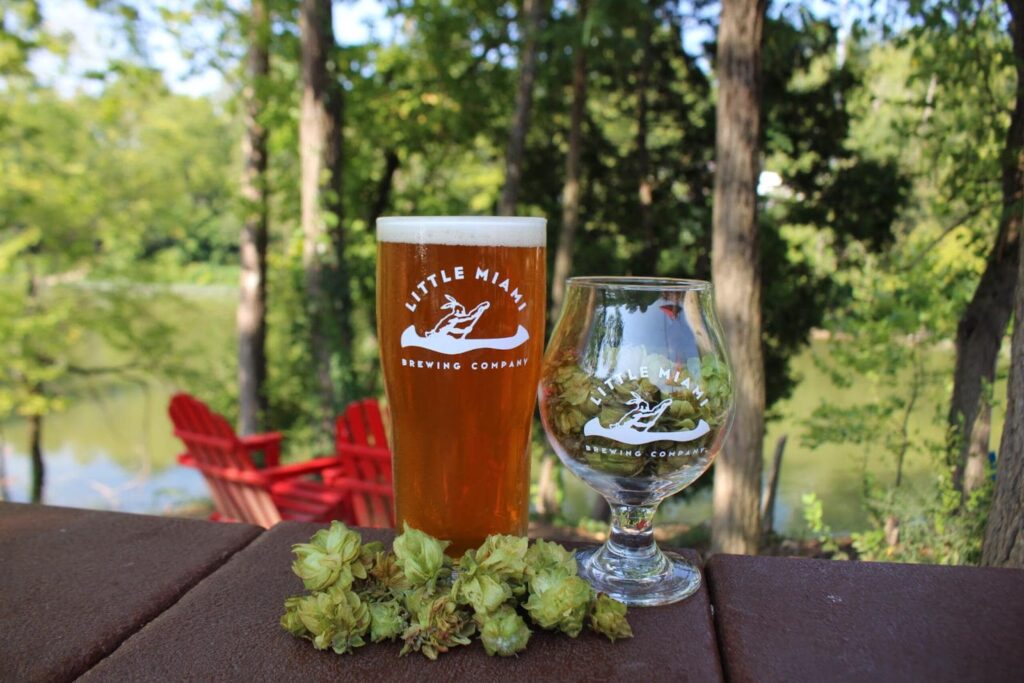Picture this: it’s a hot summer evening, and you’re at a buzzing craft brewery with friends. A frosty pint of IPA lands on your table, and as you take that first sip, the sharp, refreshing bitterness dances across your taste buds. It’s a flavor you’ve grown to love—or maybe you’re still warming up to it. Either way, have you ever wondered why beer tastes this way?
Why does bitterness play such a pivotal role in the beer-drinking experience? Is this an acquired taste, or is there something deeper—something scientific—beyond an acquired taste?
Bitterness is among the first flavors which come across when drinking a cool glass of beer. To some, it is a nice balance to malt sweetness , to others, it’s the character that defines their favorite craft beer. But just what causes this bitterness? In some magical green cones called hops lies the answer.
This blog intends to explore the fascinating science behind hops, their function and flavoring contributions to beer, and also why they become an indispensable ladder in making some of the best craft beers among all.
What Are Hops, And What Purpose Do Hops Serve In Beer?
Hops or “soul” of beer are the flowers that come from climbing perennial (Humulus lupulus) plants which are found in temperate regions. They have been utilized as flavoring agents and for their preservative properties in brewing beer for generations. Brewers learned long ago that hops would lengthen the shelf life of beer while providing aromatic complexity.
Hops in beer do more than just enhance the taste- they define it. Their bitterness balances the sweetness of the malt, ensuring that the beer doesn’t have a cloying taste. Think of hops as the secret ingredient that would make beer both refreshing and multidimensional.

How do Hops add Bitterness to Beer?
The bitter hops in beer come from the resinous portions of the hop flowers containing compounds known as alpha acids. When hops are boiled during the brewing process, they have an isomerization reaction that brings their bitterness out into a beer.
Interestingly, the level of bitterness also depends on how long the hops are boiled. The longer they are boiled, the more bitterness they release. This helps brewers control the beer’s bitterness, creating everything from smooth, mild lagers to intensely hoppy IPAs.
Do you know what International Bitterness Units (IBUs) are?
In short, it is a measure of the perceived bittering in beer. A light lager might have an IBU rating of 10, whereas the hoppier IPA might shoot above 60. It’s because of this variation that some of the beers are considered mild and sweet while others are more with the punch of bitterness.
What Makes Hops Taste So Unique?
Hops don’t just add bitterness—they also contribute to a beer’s aroma and flavor. Depending on the variety and how they’re used, hops can bring notes of citrus, pine, spice, or even tropical fruit.
Some examples are:
Cascade Hops: Known for their grapefruit and floral notes, these are a favorite in American ales.
Centennial Hops: These are referred to as “Super Cascade” hops. These hops are very similar to Cascade, with a bold hit of citrus character and a little spice.
Saaz Hops: The classic throughout the European lagers, they give a mild earthy bitterness.
Hops environments also influence flavor.
Each strain of hops has its unique combination of flavors and aromas, including piney, citrusy, and sometimes floral or spicy. It’s for this reason that knowledge about hops in beer is what contributes to an understanding of a craft beer.
So, You Ever Wonder Why Do We Love Bitterness in Beer?
Bitterness might be an acquired taste, but it’s the unsung hero that balances the sweetness of malt and gives beer its signature crisp, clean finish. Without it, beer just wouldn’t have that refreshing “zing” we’ve all come to love.
On a psychological level, humans are wired to be intrigued by bitterness—it wakes up the palate and brings boldness to flavors. It’s why we can’t resist the allure of dark chocolate or the kick of black coffee. Over time, we learn to appreciate how hops and beer bitterness come together to create a truly unforgettable drinking experience. Cheers to bitterness—keeping our taste buds on their toes!
Exploring Cincinnati Breweries and Their Love for Hops
Cincinnati breweries just prove to be one of the most innovative hops users in the country, creating beers to suit every palate. The Cincinnati craft beer scene demonstrates this artistry in the experienced hands that turn a masterpiece of hops into seasonal brews or hoppy IPAs.
Well at Little Miami Brewing Company, we are proud to be a part of this great brewing community. As a result, our range of beers streamlines the hops spectrum, from well-balanced, mildly bitter lagers to richly hop-heavy ales.
(Check out our craft brews here!)

West Coast IPA ABV 6.0% IBU 65
A fruity IPA brewed with a famous San Francisco yeast strain and a massive amount of American hops (Cascade, Centennial, and and dry hopped with Mosaic) for a piney, citrusy hit of goodness.
Curious About Hoppy Beers? Here’s How to Train Your Taste Buds!
We know that not everyone falls in love with bitterness immediately. And that’s completely alright. While some people develop an affinity with the hops instantly, others take time.
Here are a few tips on how to go about it:
Start small: You can begin to enjoy lower IBUs like pale ales and pilsners before moving to a hoppy double IPA.
Experiment with Styles: Try a couple of hop-forward styles, such as a West Coast IPA with piney bitterness, or a Bohemian Pilsner, which is light in color and mouth feel with just a bit of hop bite.
Attend Brewery Tastings: Many of the Cincinnati breweries offer guided tastings about hop varieties and how they affect beer.
Debunking Myths About Hops and Beer Bitterness
There are 2 most common myths about hops and beer bitterness
Let us see what it includes:
“Hoppy Beers Are Always Bitter”:
Not necessarily! While hops do contribute bitterness, they also play a crucial role in adding aroma and flavor. The misconception arises because people often associate the presence of hops with bitterness. However, the way hops are used in brewing significantly impacts the result.
- Dry-hopping, a technique where hops are added after the boil during fermentation, emphasizes aroma and flavor—like fruity, floral, or citrusy notes—without adding additional bitterness. This is because the alpha acids responsible for bitterness are not activated during dry-hopping.
So, while some hoppy beers are bitter, others focus on the aromatic and flavorful aspects of hops, making them approachable even for those who prefer less bitterness.
“Higher IBUs Mean Better Beer”:
This is a myth! While International Bitterness Units (IBUs) measure the theoretical bitterness in beer, they don’t tell the whole story. The perceived bitterness depends on how well the hops and malt are balanced in the final brew. For example:
- A high-IBU beer with a strong malt backbone (like a barleywine) might taste less bitter than a low-IBU beer with minimal malt sweetness.
- Balance is key—great beers are crafted with harmony between bitterness, sweetness, and other flavor components.
In short, IBUs are just one piece of the puzzle, and a beer’s overall flavor profile is what truly matters. A beer with lower IBUs can be just as enjoyable (or better!) than one with a sky-high IBU count if it’s well-balanced.
What Sets Little Miami Brewing Company different from others?
We believe that good beer begins with great and fresh ingredients, and hops are one of them .

Whether you’re a fan of crisp pilsners or bold IPAs, our lineup celebrates the versatility of hops. Plus, our riverside location offers the perfect backdrop for enjoying a cold beer with friends.
An integral thread from Cincinnati’s bustling craft brewing tapestry, Little Miami Brewing Company delights in the artistry of hops.
Relax among the best hops has to offer at our riverside brewery, ideal for beer lovers who want a comfortable and welcoming place.
Whether you are visiting us for a hoppy IPA or malty lager, our team loves making beers that showcase the best of hops. Plan your visit today!
So , What Are You Waiting For ?
The next time you take a sip of beer, take a moment to savor and appreciate the humble hop. Its journey from the field to your pint glass speaks volumes about the artistry and science behind brewing. Whether you’re a beginner or a craft beer enthusiast, exploring the world of hops is a flavorful and rewarding experience.
So, grab a pint, enjoy the bitterness, and toast to the magic of hops. Cheers to great beer and even better times at Cincinnati breweries like ours— The Little Miami Brewing Company!
Check out our menu, or give us a call– we’d be happy to help you!
LOCATION & HOURS
Taproom/Brewery Phone:
513-713-1121
Group Reservations / Lost Inquiries:
reserve@www.littlemiamibrewing.com
Band Inquiries:
Joe@www.littlemiamibrewing.com
Opening hours
Monday 11:00am – 10:00pm
Tuesday 11:00am – 10:00pm
Wednesday 11:00am – 10:00pm
Thursday 11:00am – 10:00pm
Friday 11:00am – 12:00am
Saturday 11:00am – 12:00am
Sunday 11:00am – 9:00pm




